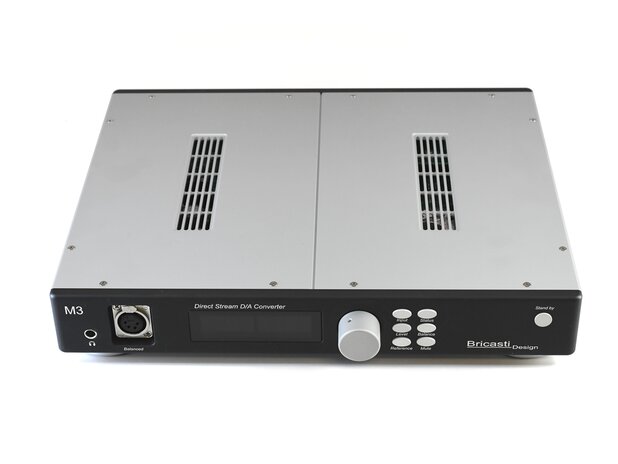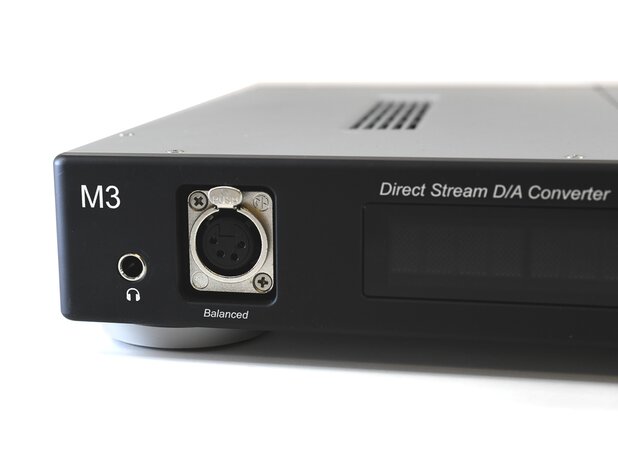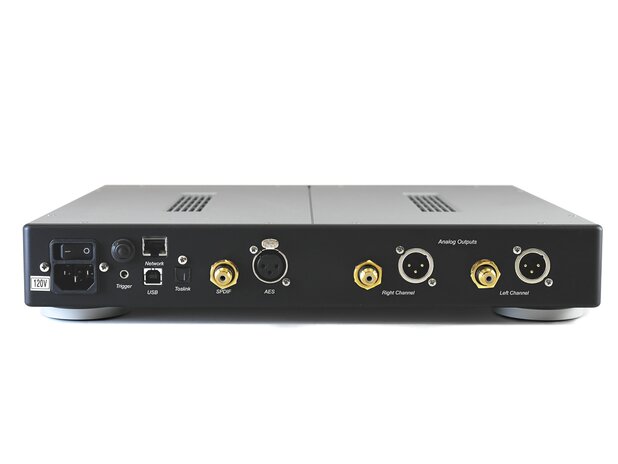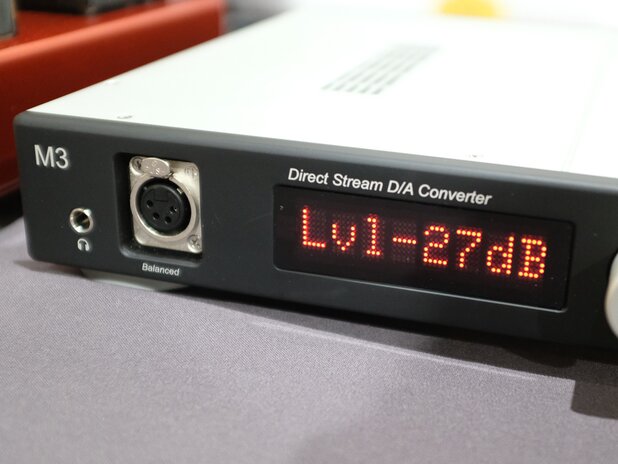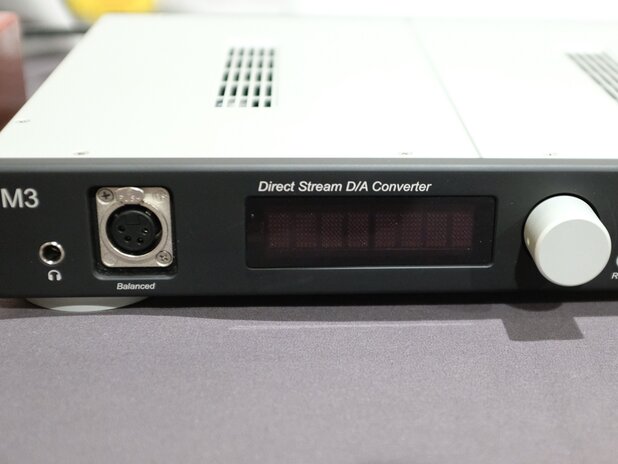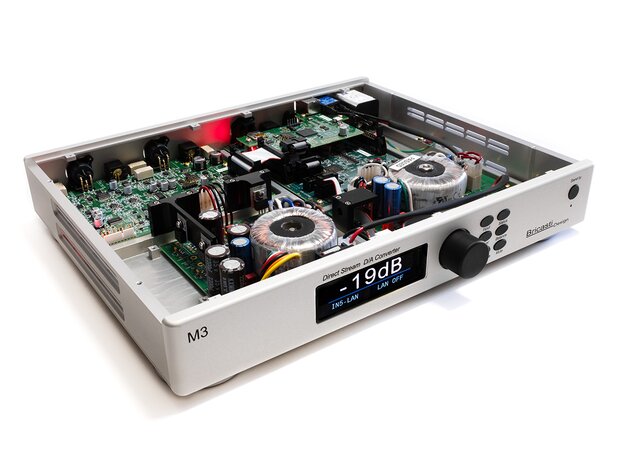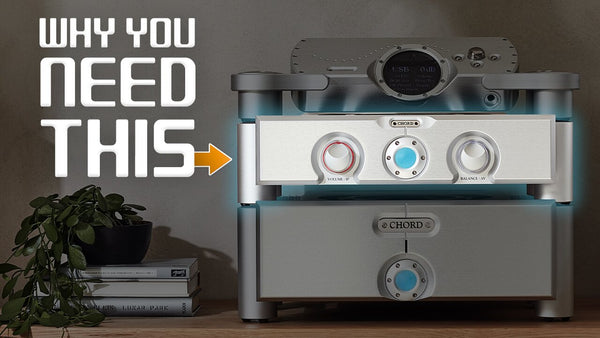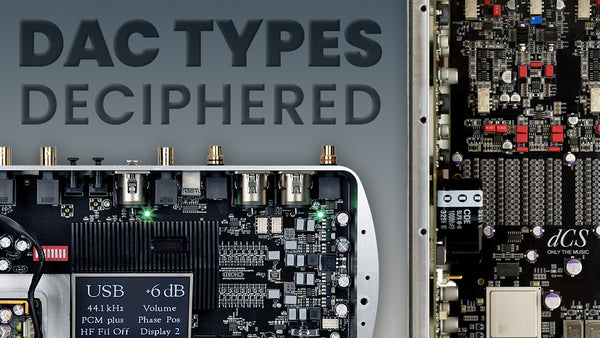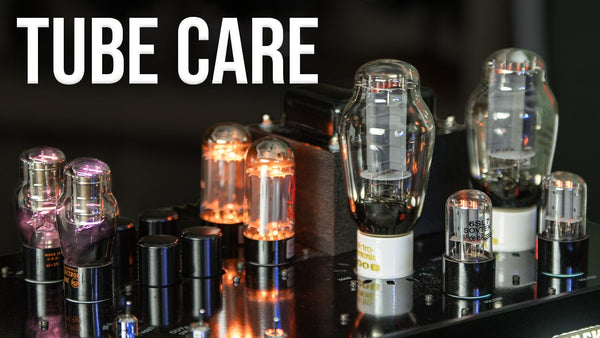Bricasti M3h DAC and Amp Review
Read Time: Approx. 10 min.

Bricasti DAC Expanding on a Great Design
The Bricasti Design M3H DAC & Amp features two fully differential conversion channels, separate conversion for PCM and native DSD, and a balanced analog level control circuit, making the M3H suitable for all applications. Internally the M3H utilizes two independent linear power supplies for the analog and digital processing to ensure low noise and superior isolation. The M3H adds a headphone amplifier option with balanced inputs for expanded utility in your audio system.
The M3 Design Brief
The basis for the M3 started with the same proven dac design Bricasti made for the M1 D/A converter; a dual-mono signal path, a fully true balanced topology based on dual ADI 1955 converters, all linear power supplies, and a separate digital signal processing engine taken from the M1. Based on this proven design the next product Bricasti made was the M12, which was essentially the M1 with the addition of a discreet ladder analog level control which allowed Bricasti to develop their native DSD conversion. The M21 then followed, a stand-alone DAC version of the M12 which included the native DSD conversion from the M12 with an analog attenuation stage to manage the DSD. Continuing the evolution of the M21 design work became the basis for the M3.
A Bit About True DSD Conversion
In the M12 design, Bricasti had an idea to create a true DSD converter, in simple terms this is a very high-speed switch, up to 10GHz, followed by a low order analog filter. The problem presented in processing and converting DSD is that if one is to maintain true DSD, then no digital signal processing can be done. There is no FPGA, this is a much simpler device, just a switch. DSD is a one-bit signal, so you simply have to create the analog waveform or signal by simply switching something on and off very fast. This was the idea behind it, a simple way to convert vs PCM that requires 16 or 24 bits to move. For example, a “ladder DAC” is a series of resistors that moves up and down a ladder to create the converter for PCM, so there are a lot of switches, but they move slowly. The process in the Bricasti DACs is much faster.
Thereby most all converters convert DSD to multi-bit or PCM format, and once converted that allows for management of the playback for level matching. The muting of transition noise is all simple and cost-effectively done in the digital domain, but the conversion is now PCM, not a true DSD one. Bricasti solved this in the M12 by performing all these background tasks in the analog domain with programmable level control. All signal processing is elegantly done in the analog domain, transitions from PCM to DSD are silent and level matched. In the M12 this is a costly way to convert DSD, so when making the M3 Bricasti had to find a more cost-effective way to manage the analog signals and deliver NDSD. This technique was brought forward into the M21 and then the M3 for true DSD conversion.
You can’t create a DSD converter in any kind of DSP like an FPGA; this is the fallacy of DSD. If you want to preserve it, you cannot manipulate it in any way. FPGA is useless as a true DSD converter - you have to convert it to PCM as 1 x 1 = 1. You are unable to do anything with the data stream unless it''s converted. And once converted, a noise filter must be utilized. It can then be done in the digital domain, not analog, but it is no longer DSD. Companies using an FPGA use it to recreate what the ADI1955 does, a sigma-delta modulator.
Conversion in the M3
The M3 features 2 digital audio conversion paths, 1 for PCM which utilizes a sigma-delta type as found in the M1, and one for DSD, a true one-bit modulator of our own design and unique to the industry. This DSD conversion is a true 1-bit analog converter followed by an analog post noise filter. As stated above there is no chip or part for the DSD per-say; it’s a very high-speed analog switch that will run up to 10Ghz with an analog filter, all the mutes, level changes, fade-outs, etc. done by the analog level control. You can say it is an analog discreet design. The result is a pure DSD playback unlike any other converter in the market. Both converters create a true differential analog waveform from the digital data stream, and as in the M1, the M3 also employs a discrete current to voltage conversion stage to create the true balanced signal. Clocking is implemented with a technique called DDS (direct digital synthesis) which takes clock induced jitter to immeasurable levels.
Oversampling is done via an ADI Sharc processor chip, and in this case, the ADI1955 will run 384k PCM digital conversions. The ADI 1955 is limited to a 192k PCM conversion. Bricasti also does their own I-V or current to voltage conversion. Think of the ADI1955 like a car engine. It does the bulk of the work but by adding a supercharger (the ADI Sharc) and then force air injection (I-V conversion) so now the engine runs more powerful and more efficient. Today’s Digital to Analog chips can do all the work but when utilized in the fashion Bricasti does this is where you get a Digital to Analog that excels in sound quality. It is separated from the rest of the pack.
The M3 Analog Section
As stated above, the Bricasti M3 DAC is a truly balanced converter and the complete analog path and its attenuator are also true differential. As in the M1, the M3’s unbalanced outputs are separately buffered allowing for use of both outputs at the same time to drive different amplifiers or preamps. A common use is to use one for driving a subwoofer and the other for a main speaker amp drive. The M3 has a robust linear analog power supply with voltage rails of +15V and -15V, therefore the M3 can be used to drive the power amps directly with no issue of available current.
The M3 utilizes the same analog attenuator as the M21; this was chosen in the M21 and M3 for its small footprint and low power consumption. The attenuator has a dual function in the M3, one for managing the NDSD conversion path and the other is the ability to use the M3 as a preamp source, to direct drive the power amps or headphones.
The M3h: Delivering a True Balanced Source
The M3 has the option for a balanced headphone driver, called the M3H. As stated above, as a converter the M3 is truly balanced and this follows through to all the analog stages of the M3. This makes the M3 one of the only true balanced headphone sources. There are 4 amplifiers in the M3H. There is no pseudo balanced opamp splitting to convert to-and-from balanced. As with the main outputs, the headphone drivers are also separately buffered so that all outputs can be used at the same time with no consequences. Given the high voltage rails in the analog supply, the M3 can drive most common headphones to acceptable listening levels with extremely low distortion. There is no change to overall operation with the H version. When the volume control is set to 0 the analog attenuator is bypassed, and now it acts as a straight Dac like the M3. To use it as a DAC just connect the XLR or RCA to the preamp or direct drive to the power amps and use it as desired. From the M3H UI control standpoint, it has the same functionality as the M3 DAC. It’s a very versatile product as you no longer need some sort of Passthrough functionality on your Preamp to bypass the gain control of the Bricasti.
One important thing to note: there is no muting functionality of the Headphone jacks. This is not something easily done with a balanced connection and Bricasti did not want added circuitry in the signal path. Usually, this option only occurs on single-ended 1/4" connections where you have a different ground topology. Thus, if you have the M3H set at 0db and you connect your headphones, watch out! Hearing damage. It is also important to turn off any speaker amps if the unit is being used as a direct Preamp/DAC to a speaker amplifier.
Design
The M3 is robustly constructed of CNC machined and milled aluminum sections, no typical bent metal chassis, and top cover found on most products. All sections of the construction, the front and rear panels, the sides and even the bottom and top plates start out as solid blocks of aluminum which are precision machined to shape, with exact tolerances for a perfect fit. These parts are then anodized, and the text and markings are laser etched for a clean and enduring look. Not only is the chassis machined in-house but just about every aluminum part from the buttons to the feet are created from scratch in Massachusetts. A true Made in America story.
Connections
You are well covered no matter the source. The M3 comes with Single Wire XLR AES/EBU and RCA SPDIF rated at the following resolutions: 44.1 kHz, to, 192khz, DSD 64fs as DoP. The Optical Toslink input is only rated up to 96k but this seems to be utilized less and less these days. The Network and USB Class 2 connections are rated at 44.1 kHz to 384kHz, DSD 64fs,128Fs as DoP. The USB connection is asynchronous design and for superior noise performance, the interface is electrically isolated from the host computer, eliminating any grounding or power induced noise issues that could be transmitted to the M3 from the computer. There are both RCA and XLR analog outputs for connecting to ether a Preamp or directly to a power amplifier. The M3H comes with both a 1/4" and 4 pin female XLR for Headphone operation. There is a power trigger control so the unit can be used to power on an external power amp for speakers or can be programmed to have a Preamp turn on the Bricasti if used just as a straight DAC.
Sound
What is the sound signature and how does it stack up to the competition? The M3H easily drives the most demanding headphones on the market. We have put it to the test with the Hifiman Susvara & HE6, Sennheiser HD800 and just about every planer dynamic headphone from Audeze and Meze. It has little problem with control of demanding drivers. The Susvara is one of the hardest and the M3H provides adequate power for the bulk of the market. Bar the guys that like to make their eardrums bleed. The Voltage rails do a very good job of controlling the high impedance swing of the Sennheiser HD800. I typically recommend tube amplifiers for this headphone because of the need for higher voltage.
The amplifier is very quiet with sensitive IEMs we have here at Moon Audio. I find the Bricasti to be on the warm side yet very detailed and controlled. Not as analytical as the Chord Hugo TT2. While I find with each iteration of the Chord Electronics DACs, they do get warmer and warmer, but they are still on the resolute analytical side. I can''t say I like the Bricasti or the Chord Hugo TT2 more than the other. Each offers a different experience. The Chord Hugo TT2 has a little more power when utilizing the Dual XLR output on the back of the unit. Heck, you can drive a small pair of efficient speakers from it. But from a headphone standpoint, I put them on equal footings. And in both cases, the DAC is the best part of the electronics. The Bricasti does belly up the Chord Hugo TT2 with the utilization of the network connection. This makes it a Roon Endpoint which these days are a very big plus to the consumer.
The addition of the M-scaler to the Chord Hugo TT2 does take things up a notch or 2 or 3. But the M-scaler can also be utilized with the Bricasti but only to an input of 384kHz resolution. But can I say my brain can process a huge difference between a 384kHz vs 768kHz signal? Not really. I think what the core engine of the Chord Hugo M-scaler brings to the table makes more of a difference than between these 2 super high-resolution points. I could easily spend the rest of my life with either of these DACs. They both come from long, rich historically audio-based companies. So, if you want a more natural and warmer sound with great resolution choose the Bricasti. If you want Hyper detail and resolution that is never fatiguing choose the Chord. You win in both cases.
Features
Power Supply
There are 2 power supplies. The first powers the analog section and covers both left and right analog channels. The second powers the digital section. Both are linear power supplies. Linear regulated power supplies regulate the output voltage by dropping excess voltage in a series dissipative component. They use a complex regulatory circuit to achieve very low load and line regulation. Linear regulated power supplies have very little ripple and very little output noise. Helping provide the quietest of backgrounds for headphone listening.
The analog power supply has further power supply sub-regulation on the analog board; it is split on board since it’s a dual-channel or dual-mono converter just like the Bricasti Design M1. Therefore, each channel has its own sub-regulation. The power starts from the main analog supply and is regulated from 18V under load to +15 and - 15V. This is again regulated on the analog board to + and - 14.5V with separate regulators for each channel, this is done for further reduction in power supply ripple. The M3 has local large 500pF caps for the post regulated analog voltages on the analog board. The linear supply has pre-filtering with 2500uF caps and 3300uF for the post-regulation. This is all taken from the M1 design’s multiple stages of power regulation to ensure the lowest noise and ripple.
The idea here is to separate the digital and analog section. They have isolated grounding from each other. The main benefit to do this is to further separation of the analog left and right supplies.
Verdict
In summary, the M3 delivers a true balanced source for all applications. The M3H is unique in the headphone amp market as one of the only true balanced sources to drive balanced headphones correctly. It also provides the best conversion for both PCM and DSD sources and support of all input sources including network streaming. The M3 and M3H with the network card make it Roon Ready and an EndPoint DAC. Bricasti Design can do firmware updates to improve both the sonic signature and upgrade the digital filters it has included in the GUI. See more about these filters in the M3 manual. These Oversampling filters are used to give you either a more analytical sound or a more musical sound. The Display will provide information on such items as Status to conversion mode etc. There are several levels of display intensity you can tailor for visual presentation. There is a balance control which is a rarity these days in a headphone amp. I find this a very important feature. We have so many customers with hearing imbalance. This can help to get them centered with the singer when utilizing headphones or even speakers.
Related Videos
DACs Deciphered: The 4 Major Types Explained
Bricasti M21 DAC Unboxing
Understanding Audio File Types in Relation to DACs
What's in the Box
Specifications
Digital Inputs:
XLR: AES/EBU 24 bit Single Wire
RCA: SPDIF
Optical: Toslink 44.1- 96k, USB 2
RJ45: Ethernet (Optional)
Sample Rates:
AES, SPDIF: 44.1 kHz, to, 192khz, DSD 64fs as DoP
USB: 44.1 kHz, to, 384kHz, DSD 64fs 128Fs as DoP
Ethernet: 44.1 kHz, to, 384kHz, DSD 64fs,128Fs as DoP
Jitter: 8psec @ 48k / 6psec @ 96k
Finish: Anodized Aluminum
Dimensions: 14” x 11.25“ x 2.5”
Weight: 10 lbs
Shipping Weight: 15 lbs
Mains Voltage: 100, 120, 220, 240 VAC, 50 Hz – 60 Hz factory set
Trigger in/out: TRS mini jack, Tip ground, Sleeve 5V
Power consumption: 20 Watts
Warranty parts and labor: 2 years non-transferable
Balanced Analog Outputs: XLR balanced (pin 2 hot)
D/A Conversion:
PCM 24 bit delta-sigma 8x oversampling, NDSD pure 1 bit conversion for DSD
Impedance: 40 ohm
Output Level:
@ 0 db front panel +14.3 dbm 4 db RMS ( bypass mode)
Frequency Response @44.1k: 10 hz- 20 kHz +0dB, -.2 dB
Dynamic Range: >120dB A-Weighted
THD+N @ 1k:.0008% @ 0dbfs / .0004% @-30dbfs
Unbalanced Analog Outputs: RCA
D/A Conversion:
PCM 24 bit delta sigma 8x oversampling
NDSD pure 1 bit conversion for DSD
Impedance: 40 ohm
Output level: @ 0 db front panel = +4db 2V rms
Frequency Response @ 44.1k: 10 hz- 20 kHz -.2 dB
Dynamic Range: >120dB A-Weighted
THD+N @ 1k:.0008% @ 0dbfs / .0004% @-30dbfs




